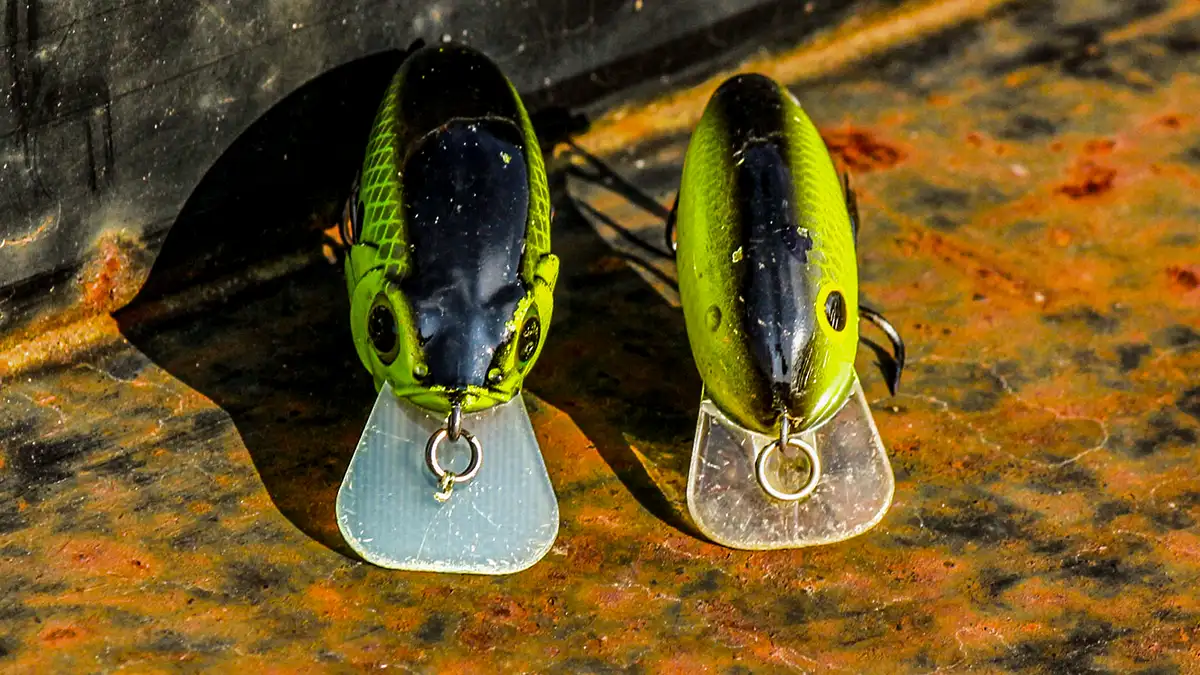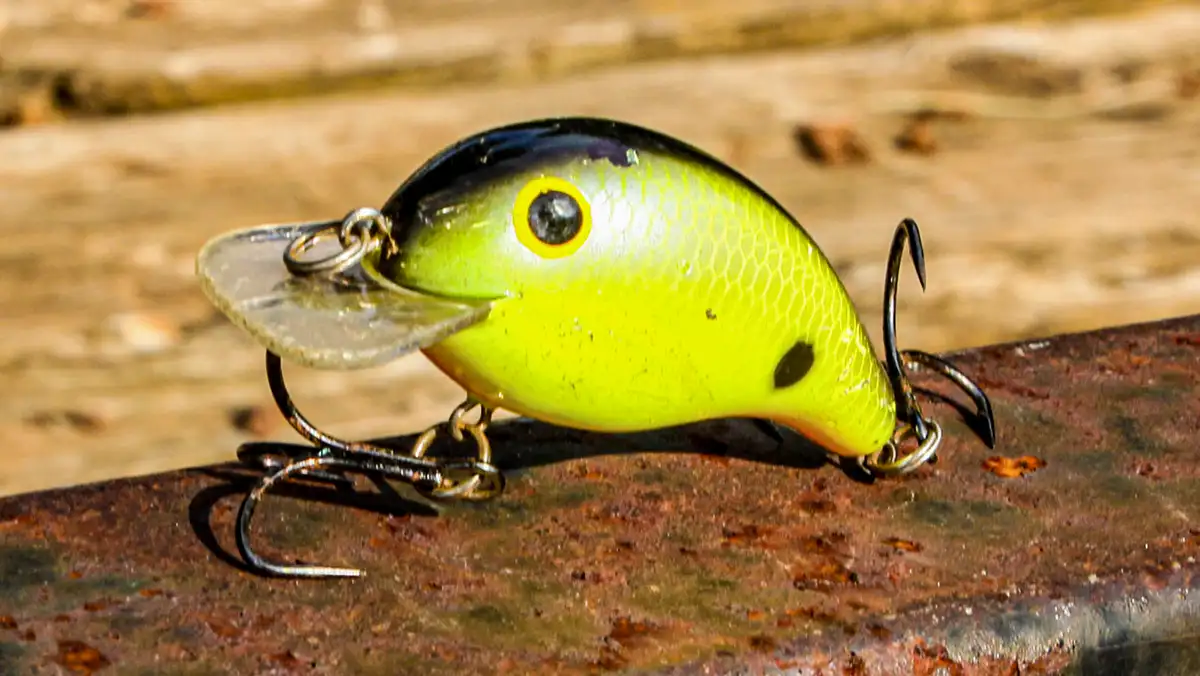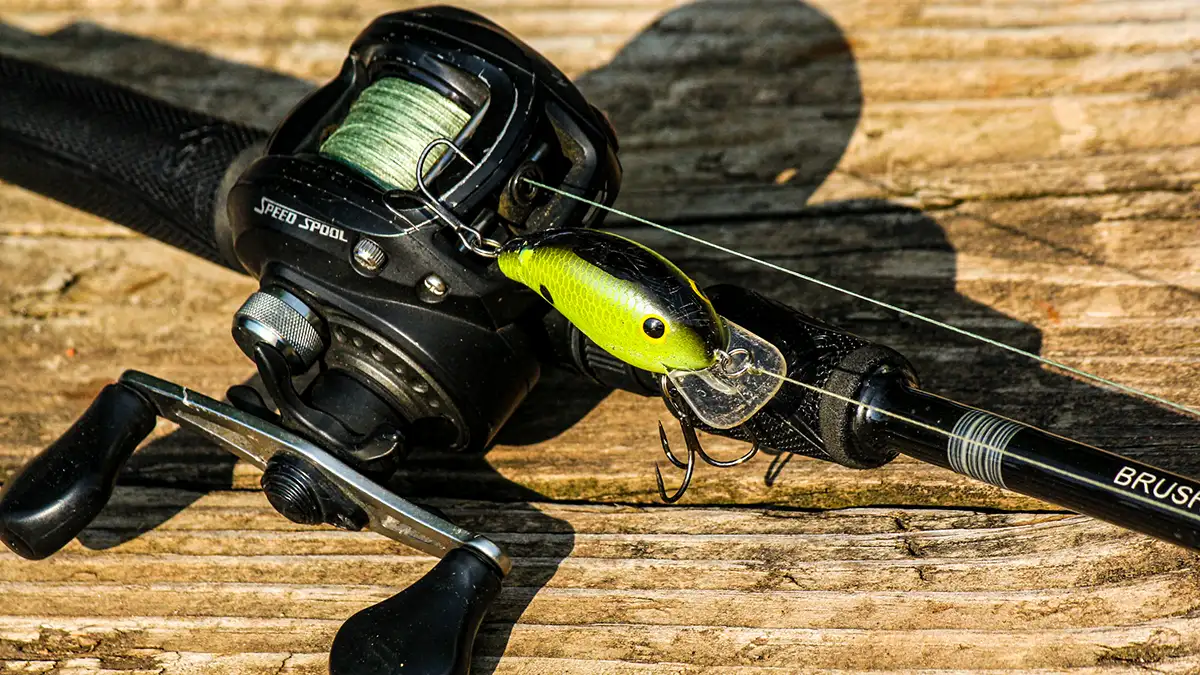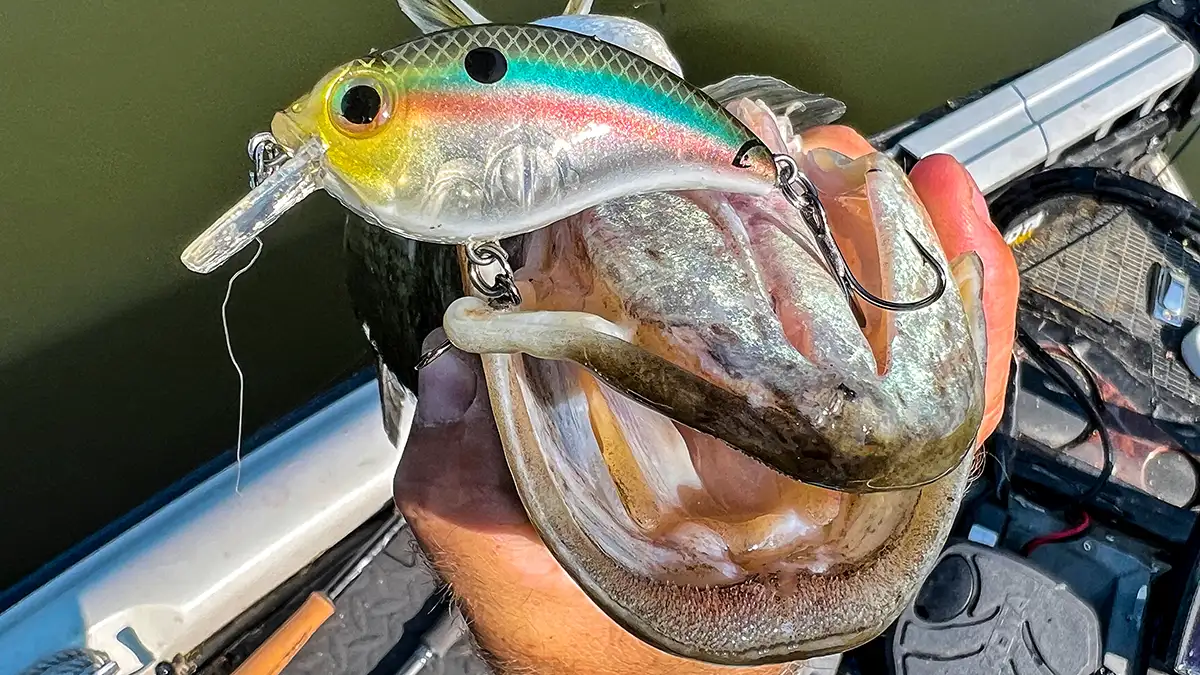Each and every year about this time, across much of the U.S. anyway, there’s that last cool morning that comes along. You breakout the hoodie for the first time in a few weeks, dare to wear jeans out onto the water and then find yourself shedding everything you possibly can around 9 o’clock. And you realize, it’s time to face the facts.
It’s time to put that hoody in the bottom drawer, bust out the shorty shorts and either lather up those legs with sunscreen, or suffer the consequences of that first baking of the year and move on with your life. Summer’s here. There’s no arguing it now. It’s finally hot, and it’s about to stay that way awhile. But, unlike hoodies, square bill crankbaits still work great in the summer.
A year-round lure
A square-bill crankbait is among the very best lures you can fish with in the spring for bass, especially in the prespawn. The bass are shallow, hanging tight to cover, hungry and aggressive. And, the water often has at least a little stain to it, if it’s not all-out muddy. You couldn’t ask for a better setup for square bill fishing.
But even though this crankbait group shines brightest in the spring, it still produces flashes of brilliance in the fall, winter and even summer. A square bill is, in fact, the one bait I’d go with if I absolutely had to catch a fish anytime of the year, especially here in Alabama. But I could make the same case for all seasons on fisheries across most of the U.S.
In the fall, like the spring, the majority of bass are shallow, gorging on shad and other bait that move up in the water column as the water’s surface temperatures cool. So square billing in the fall is as much a no-brainer as it is in the spring.
The bite slows in general in the winter. As the cold-blooded bass become less active and their metabolism slows, they need far less sustenance to survive. Still though, they do have to eat sometimes, and making repetitive casts with a square bill is a great way to trigger strikes shallow from bass that pass up other baits.
But how do you make the most of square bill fishing in the summer? We are going to focus the remainder of our conversation today on exactly that.
Summer and winter square bill similarities
In the same way there are similarities between fishing a square bill in the spring and fall, there are also parallels between fishing a square bill in the summer and winter. A large portion of the bass population pushes out deeper during both of these seasons, in more than 5 feet of water for sure.
And since that’s around the max depth that most standard size square bills dive, it’s important to note that you’ll be fishing for less bites on average shallow in the summer and in the winter, than you would be in the spring and fall.
There are also similarities in the bait selection for summer and winter, as opposed to the spring in particular. In the spring, the bass are again very aggressive and feeding up for the spawn. So a fairly standard size square bill, like a Bill Lewis SB-57. This is one of mine and my dad’s favorite square bills. For those unfamiliar with the bait, it’s very similar to the size of a Strike King 1.5, another fantastic spring square bill crankbait.
But even these baits pale in comparison size-wise to the oversized square bills that are on the market, which also work well in the pre-spawn season. Baits like a Strike King 2.5 and even larger square bills can catch big bass in late February, through March and into April. But as for the winter and summer, we will actually shy away from bigger baits, even from the standard size square bills like the SB57 and 1.5.
Go smaller in the summer
I have brought my dad up a couple times already in this piece, because much of what I know about square billing I learned from being in the boat with him. And, some of the other lessons I’ve learned on the topic through trial and error, have come by way of dad schooling me from another boat.
During one instance in particular, the two of us fished a club tournament out of different boats in the same area. He ended the day with 15 pounds, caught on a square bill. I finished up with 4 pounds, using the same bait in the same places.
When we are in the same boat fishing team tournaments, he often has a square bill in hand, I’d say roughly 60% of the time on average, throughout the entire year. And outside of the spring, the particular bait that gets the most action is a Bandit 100. This bait is slightly smaller with a slightly more subtle action as compared to most “standard” square bills.
The Bandit 100 has a square bill no doubt, but the corners are a little more rounded. And the body of the bait is a little more rounded as well, as compared to many other comparable baits. These attributes create a more subtle rocking, rolling action. As compared to the harder rocking, side-to-side slamming action that more aggressive baits have. This is a seemingly minute, but in fact major difference maker in the winter. And I’d say it’s equally important in the summer.
Even though a bass’s metabolism is firing on all cylinders in the steamy shallow waters of summer, they are often still feeling the fatigue of the almost unbearable heat. They are on the back side of a grueling spawn. And although they are willing to chase a big bait down, they’d often rather just nip at a little cheese puff than exert a lot of energy chasing down a steak, energy they’d then need to replace again with a big meal soon after.
Now, I’m not arguing that bass won’t eat big baits in the summer. Going with a smaller bait is more about appealing to what a bass would rather have, and giving yourself the best chance to catch as many bass as possible at the same time. Again, the numbers of fish shallow in the summer are much lower. So, you could throw a big bait and get a few bites, but a smaller, subtle bait will allow you to pick apart the shallows and draw strikes from more bass, most of the time.
This principle is what makes a Texas rig worm such a great bait shallow in the summer. It’s an easy, slow moving meal that a bass can inhale while exerting little to no energy. A subtle square bill allows you to appeal to the same fish, while being able to cover a good bit more water than you could with a Texas rig.
Summer square billing differences
We’ve talked about some of the similarities between fishing a square bill in the summer and winter, but let’s talk now about some of the differences. First of all, you don’t have to worry as much about talking a bass into biting. In the winter, I have at times made 6 or 7 casts to a particularly attractive piece of cove before drawing a strike from a lethargic bass, one that was most likely sitting there the whole time. Repetitive casts were necessary to annoy the bass into biting. And those casts had to be made very close to the cover, to hit the fish on the nose.
In the summer, you’ll still want to fish around cover, but it’s not nearly as important to get the bait right beside the cover, and receptive casts are hardly ever necessary. Bass will make a decent move to get a bait when the water is warm and they’ll also hit it on the first pass, typically.
They are also more likely in the summer to be roaming down bare stretches of bank, patrolling the area for the occasional ball of baitfish, intermittent bluegill bed or small rodent, duck or other abnormal prey. So making casts between cover, which is typically a futile endeavor in the winter, often produces bites in the summer.
You’ll also want to loosen your drag up a little in the summer, and perhaps step your line size up a bit. In the winter, the bass often just roll over and come to the boat with little to no fight. In the summer, they go nuts. You may set the hook on a fish and it shoot off 10 feet in any direction before you can even turn the handle. And, the mouths of the bass are typically softer in the warmer water, so there’s a greater chance of the fish tearing off. All of this considered, it’s best to keep the drag a little loose and lean towards 17-pound test fluorocarbon if you’re fishing around relatively big fish and rough cover.
My dad will even pair his Bandit with a medium action 7-foot rod and 30-pound Sufix 832 braided line. This allows him to throw his crankbait through the nastiest stuff, in pursuit of the biggest fish. He uses the soft rod and loose drag to make up for the low-stretch of the braided fishing line, allowing the bass to run and fight without tearing free.
I personally haven’t been able to go there yet with my own setup, and have openly rebuked him more than once for throwing a crankbait on braid. But, I’ve also seen him, in recent years, lay into a 7-pound bass on his Bandit that buried up in a laydown beyond all hope of retrieval, with anything but braided line. He was able to ease the fish out though and got it into the boat, then looked at me with kind of a, “Well.” Yeah, I still get schooled by him every once in a while. What are you gonna do?
Square bills are situational not seasonal
Square-bill fishing isn’t seasonal, in a go or no-go sense. Though there are certain things to do differently in different seasons, this bait category can be a big producer throughout the entire year. In the summer in particular, you can use a slightly undersized, subtle square bill to cover water and catch fish that are few and far between; bass that might be a little more hesitant to chase down a faster moving, larger bait.
Up your line size a little, or perhaps a lot. And be ready to back off the drag a bit or burn your reel a few turns to account for, or catch up with, a bass that goes on a run. Take a square bill crankbait and these tips out onto the water this summer and see if you can’t make some memories of your own.
















